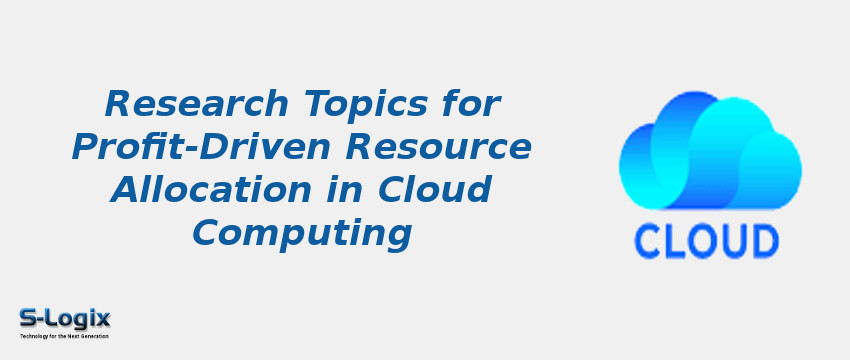Profit-driven resource allocation is a mechanism in cloud computing where cloud service providers allocate computing resources based on the profit they will generate. Sharing resources allows service providers to develop resource utilization, boost profits, and influence the Quality of service(Qos). The approach is based on the provider optimizing the resource utilization by assigning resources to the customer and helping in reaping the highest profit for the provider.
The goal of profit-driven resource allocation is to increase the provider-s profit while still providing acceptable service levels to customers. The approach is commonly used by public cloud services providers, such as Amazon Web Services and Microsoft Azure, to maximize their revenue.
The factors considered may include the customer-s willingness to pay, the cost of resources, and the expected utilization.
The profit-driven resource allocation approach in cloud computing can benefit the provider and the customer by maximizing revenue and utilization while providing customizable and flexible services. Some of the benefits of profit-driven resource allocation
• Increased revenue for the cloud service provider: By allocating resources based on profit, the cloud service provider can maximize their revenue.
• Improved resource utilization: The provider optimize resource utilization by allocating resources to customers willing to pay more, leading to more efficient use of resources.
• Better cost management: The provider can better manage costs by allocating resources based on the cost and the expected utilization, reducing waste and maximizing profits.
• Customizable services: Customers can choose to pay for the level of service they require, allowing them to tailor their services to their specific needs.
• Flexibility: The profit-driven approach allows the provider to adjust to changes in demand and allocate resources accordingly, providing greater flexibility and responsiveness to changing customer needs.
• Lack of transparency: The allocation of resources may not be transparent to customers, leading to confusion and frustration.
• Bias towards high-paying customers: The provider may prioritize high-paying customers over others, leading to unequal treatment of customers.
• Quality of service issues: The provider may prioritize profit over quality of service, leading to reduced reliability and performance for some customers.
• Dependency on customer demand: The provider-s ability to allocate resources effectively depends on customer demand, which may be unpredictable and subject to fluctuations.
• Competition and market saturation: As more cloud service providers enter the market, the competition for customers and resources may increase, leading to market saturation and reduced profitability.
• Improved resource allocation algorithms: Research can focus on developing more advanced algorithms that consider a wider range of factors, such as energy efficiency and resource utilization, to better allocate resources based on profit.
• Fairness and transparency: Research can focus on developing methods to ensure that resource allocation is fair and transparent, reducing the risk of bias and unequal treatment of customers.
• Quality of service guarantees: Research can focus on developing methods to ensure that the quality of service provided to customers remains high, even as the provider allocates resources based on profit.
• Resource allocation in multi-cloud environments: Research can focus on developing methods for profit-driven resource allocation in multi-cloud environments, where customers can access resources from multiple cloud service providers
• Dynamic pricing models: Research can focus on developing dynamic pricing models that can adjust pricing in real-time based on changes in demand and resource availability.
• Predictive resource allocation: Research can focus on developing predictive resource allocation methods that anticipate future resource needs and allocate resources accordingly, improving resource utilization and profitability.
• Dynamic pricing for cloud resources: Investigating ways to dynamically adjust pricing for cloud resources based on changes in demand and supply.
• Fair resource allocation algorithms: Developing algorithms that ensure fairness in the allocation of cloud resources among customers.
• Resource allocation for multi-tenant cloud environments: Studying ways to allocate resources efficiently and effectively in multi-tenant cloud environments.
• Resource allocation based on Quality of Service (QoS) guarantees: Investigating methods to allocate resources based on customer-defined QoS requirements.
• Energy-efficient resource allocation: Developing methods to allocate resources to minimize energy consumption while maximizing profitability.
• Resource allocation for data-intensive applications: Studying methods to allocate resources for data-intensive applications in a profit-driven manner.
• Profitability prediction models: Developing models to predict the profitability of resource allocation strategies.
• Customizable pricing models: Investigating ways to offer customers customizable pricing models for cloud resources based on their needs and requirements.
